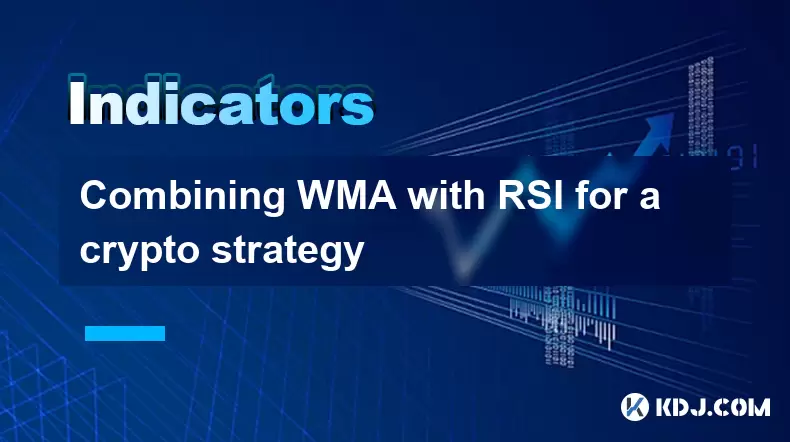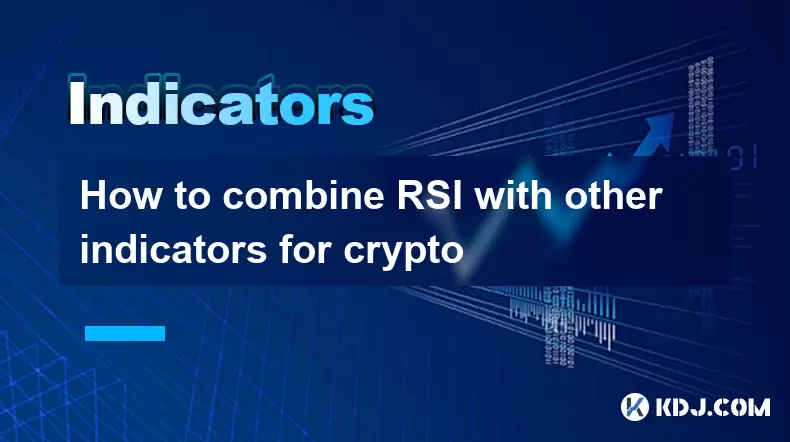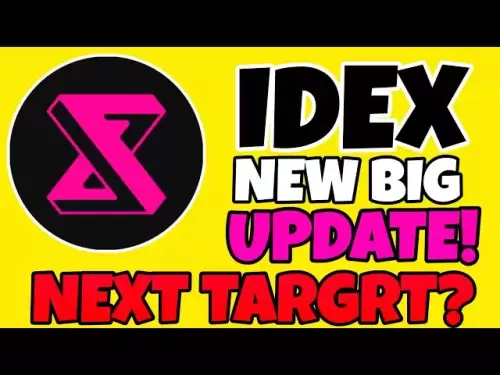-
 Bitcoin
Bitcoin $119,161.9671
1.52% -
 Ethereum
Ethereum $2,995.0722
2.34% -
 XRP
XRP $2.8555
5.32% -
 Tether USDt
Tether USDt $1.0002
0.00% -
 BNB
BNB $692.9308
1.48% -
 Solana
Solana $162.9611
1.87% -
 USDC
USDC $0.9999
0.00% -
 Dogecoin
Dogecoin $0.2014
2.84% -
 TRON
TRON $0.3032
0.90% -
 Cardano
Cardano $0.7464
6.51% -
 Hyperliquid
Hyperliquid $49.1533
5.71% -
 Stellar
Stellar $0.4773
24.77% -
 Sui
Sui $3.4979
3.93% -
 Chainlink
Chainlink $15.8552
6.01% -
 Hedera
Hedera $0.2401
23.85% -
 Bitcoin Cash
Bitcoin Cash $510.0474
0.97% -
 Avalanche
Avalanche $21.5550
4.82% -
 UNUS SED LEO
UNUS SED LEO $9.0389
-0.47% -
 Shiba Inu
Shiba Inu $0.0...01340
2.27% -
 Toncoin
Toncoin $2.9910
0.62% -
 Litecoin
Litecoin $96.4406
4.34% -
 Polkadot
Polkadot $4.0359
4.59% -
 Monero
Monero $338.4759
2.80% -
 Uniswap
Uniswap $8.6460
4.01% -
 Dai
Dai $0.9999
0.00% -
 Ethena USDe
Ethena USDe $1.0007
0.03% -
 Pepe
Pepe $0.0...01254
3.26% -
 Bitget Token
Bitget Token $4.3969
0.79% -
 Aave
Aave $312.2641
3.98% -
 Bittensor
Bittensor $397.0731
4.17%
Combining WMA with RSI for a crypto strategy
Combining WMA and RSI in crypto trading helps identify trends, filter false signals, and improve entry/exit timing by using WMA for direction and RSI for momentum.
Jul 12, 2025 at 01:28 am

Understanding WMA and RSI in Crypto Trading
In the world of cryptocurrency trading, technical indicators play a crucial role in helping traders make informed decisions. Two of the most commonly used tools are WMA (Weighted Moving Average) and RSI (Relative Strength Index). While each indicator has its own strengths, combining them can provide a more robust strategy for identifying potential entry and exit points.
WMA gives more weight to recent price data, which makes it more responsive to new trends compared to other moving averages like SMA (Simple Moving Average). On the other hand, RSI is a momentum oscillator that measures the speed and change of price movements, typically used to identify overbought or oversold conditions.
By combining these two indicators, traders can filter out false signals and confirm trend reversals with greater accuracy. This strategy becomes especially valuable in volatile crypto markets where price swings are frequent and misleading signals are common.
How WMA Helps Identify Trends
The Weighted Moving Average helps traders determine the direction of the trend by smoothing out price fluctuations. In a crypto context, this is particularly useful when trying to distinguish between genuine trends and market noise.
- A rising WMA suggests an uptrend.
- A falling WMA indicates a downtrend.
- Price crossing above or below the WMA line can serve as a signal for trend changes.
Traders often use multiple WMA lines (e.g., 10-period and 50-period) to create a crossover system. When the shorter-period WMA crosses above the longer one, it may indicate a bullish trend. Conversely, a cross below might suggest bearish momentum.
This dynamic allows traders to align their positions with the dominant trend while reducing the risk of entering trades based on short-lived price spikes.
Using RSI to Spot Overbought and Oversold Levels
The Relative Strength Index (RSI) is a bounded oscillator that ranges from 0 to 100. Traditionally, values above 70 are considered overbought, signaling that an asset may be overvalued and due for a pullback. Conversely, values below 30 are deemed oversold, suggesting potential undervaluation and a possible reversal.
In crypto markets, where volatility is high, using standard RSI thresholds requires caution. Some traders adjust these levels depending on the asset's behavior:
- For highly volatile coins, thresholds like 80/20 may be more effective.
- For less volatile assets, sticking with 70/30 can yield better results.
It’s also important to look for divergences between RSI and price action. If the price makes higher highs but RSI makes lower highs, this could indicate weakening momentum and an impending reversal.
Combining WMA and RSI for Entry and Exit Signals
To build a practical strategy using both WMA and RSI, traders should focus on confluence between the two indicators. Here’s how to approach it step-by-step:
- Monitor the price position relative to the WMA line to determine trend direction.
- Use RSI to assess whether the current move is overextended.
- Look for RSI to exit overbought or oversold territory after confirming trend alignment via WMA.
- Enter a trade only when both indicators agree — for example, if WMA shows an uptrend and RSI moves above 30 from oversold territory, this could signal a strong long opportunity.
Exits can be determined by similar logic:
- If WMA turns flat or starts trending downward and RSI enters overbought territory, consider taking profits on long positions.
- Watch for bearish divergence on RSI even if WMA hasn’t yet turned — this could be an early warning sign.
This dual confirmation helps avoid premature entries and increases the probability of successful trades.
Setting Up the Strategy on Trading Platforms
Most modern trading platforms support adding both WMA and RSI indicators directly to charts. Here’s how to set up the strategy on popular platforms like Binance, TradingView, or Bybit:
- Open the chart of your preferred cryptocurrency pair.
- Add the WMA indicator — set the period to 10 or 20 depending on your trading style (short-term vs. medium-term).
- Overlay the RSI indicator — set the period to 14 (standard) and customize overbought/oversold levels if necessary.
- Adjust visual settings so both indicators are clearly visible without cluttering the chart.
Some platforms allow users to save custom templates, making it easy to apply the same setup across different assets. It’s also helpful to enable alerts for key crossovers or RSI threshold breaches.
Traders can further refine the strategy by incorporating volume analysis or candlestick patterns for additional confirmation.
Backtesting and Risk Management Considerations
Before applying the WMA + RSI strategy in live trading, it’s essential to backtest it using historical data. Many platforms offer built-in tools for this purpose.
- Choose a specific time frame and crypto pair.
- Apply the strategy rules consistently.
- Record wins, losses, and break-even trades to calculate performance metrics.
Equally important is implementing proper risk management practices:
- Set stop-loss orders based on recent volatility or WMA distance.
- Limit position size to prevent significant drawdowns.
- Avoid overtrading; stick to high-probability setups confirmed by both indicators.
These steps ensure that the strategy remains viable even during unpredictable market conditions.
Frequently Asked Questions
Q: Can I use WMA and RSI together on all cryptocurrencies?
Yes, this combination works across various crypto assets. However, it's advisable to test the effectiveness on different coins since some may exhibit unique price behaviors.
Q: What time frames work best with this strategy?
The WMA + RSI strategy can be applied on multiple time frames. Short-term traders often use 1-hour or 4-hour charts, while swing traders prefer daily charts for broader trend validation.
Q: Should I adjust RSI levels for different cryptocurrencies?
Yes, adjusting RSI thresholds based on individual coin volatility can improve accuracy. For example, Bitcoin might respond well to standard 70/30 levels, whereas altcoins might require 80/20 settings.
Q: How do I handle conflicting signals between WMA and RSI?
When WMA and RSI give opposing signals, it’s best to stay out of the market until clarity returns. Patience and discipline are key to avoiding unnecessary losses.
Disclaimer:info@kdj.com
The information provided is not trading advice. kdj.com does not assume any responsibility for any investments made based on the information provided in this article. Cryptocurrencies are highly volatile and it is highly recommended that you invest with caution after thorough research!
If you believe that the content used on this website infringes your copyright, please contact us immediately (info@kdj.com) and we will delete it promptly.
- Ruvi AI: The Audited Token Primed for 100x Gem Status
- 2025-07-14 06:50:12
- Bitcoin's New Highs: Retail Interest and the Allure of Crypto Presales
- 2025-07-14 07:10:11
- Dogwifhat (WIF) Price Prediction: Bullish MACD Signals Potential Breakout
- 2025-07-14 07:10:11
- Ethereum Flips Bitcoin: Futures Volumes and the Altcoin Surge
- 2025-07-14 06:30:11
- Czech National Bank's Crypto Leap: Coinbase, Palantir, and the Future of Finance
- 2025-07-14 06:30:11
- BlockDAG's BEAT Vesting Pass: Dominating Crypto While HBAR Shows Strength
- 2025-07-14 04:30:12
Related knowledge

Advanced RSI strategies for crypto
Jul 13,2025 at 11:01am
Understanding the Basics of RSI in Cryptocurrency TradingThe Relative Strength Index (RSI) is a momentum oscillator used to measure the speed and chan...

Crypto RSI for day trading
Jul 12,2025 at 11:14am
Understanding RSI in the Context of Cryptocurrency TradingThe Relative Strength Index (RSI) is a momentum oscillator used to measure the speed and cha...

Crypto RSI for scalping
Jul 12,2025 at 11:00pm
Understanding RSI in the Context of Crypto TradingThe Relative Strength Index (RSI) is a momentum oscillator widely used by traders to measure the spe...

What does an RSI of 70 mean in crypto
Jul 13,2025 at 06:07pm
Understanding the RSI Indicator in Cryptocurrency TradingThe Relative Strength Index (RSI) is a widely used technical analysis tool that helps traders...

How to avoid RSI false signals in crypto
Jul 13,2025 at 06:21pm
Understanding RSI and Its Role in Crypto TradingThe Relative Strength Index (RSI) is a momentum oscillator used to measure the speed and change of pri...

How to combine RSI with other indicators for crypto
Jul 12,2025 at 08:35am
Understanding the Role of RSI in Crypto TradingThe Relative Strength Index (RSI) is a momentum oscillator that measures the speed and change of price ...

Advanced RSI strategies for crypto
Jul 13,2025 at 11:01am
Understanding the Basics of RSI in Cryptocurrency TradingThe Relative Strength Index (RSI) is a momentum oscillator used to measure the speed and chan...

Crypto RSI for day trading
Jul 12,2025 at 11:14am
Understanding RSI in the Context of Cryptocurrency TradingThe Relative Strength Index (RSI) is a momentum oscillator used to measure the speed and cha...

Crypto RSI for scalping
Jul 12,2025 at 11:00pm
Understanding RSI in the Context of Crypto TradingThe Relative Strength Index (RSI) is a momentum oscillator widely used by traders to measure the spe...

What does an RSI of 70 mean in crypto
Jul 13,2025 at 06:07pm
Understanding the RSI Indicator in Cryptocurrency TradingThe Relative Strength Index (RSI) is a widely used technical analysis tool that helps traders...

How to avoid RSI false signals in crypto
Jul 13,2025 at 06:21pm
Understanding RSI and Its Role in Crypto TradingThe Relative Strength Index (RSI) is a momentum oscillator used to measure the speed and change of pri...

How to combine RSI with other indicators for crypto
Jul 12,2025 at 08:35am
Understanding the Role of RSI in Crypto TradingThe Relative Strength Index (RSI) is a momentum oscillator that measures the speed and change of price ...
See all articles
























































































